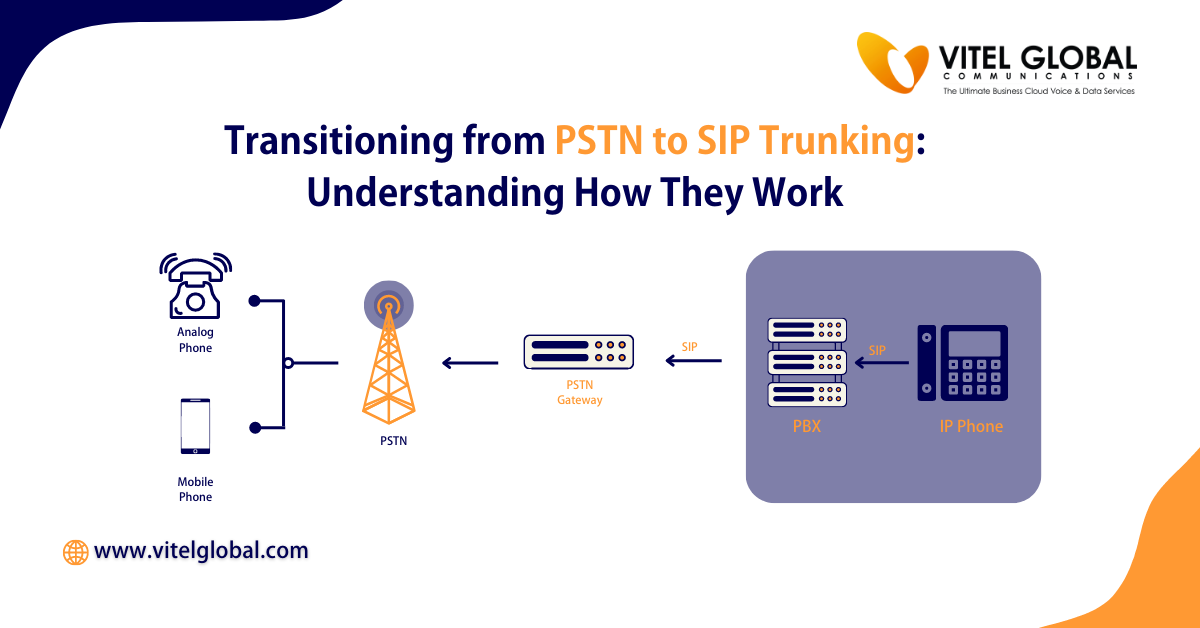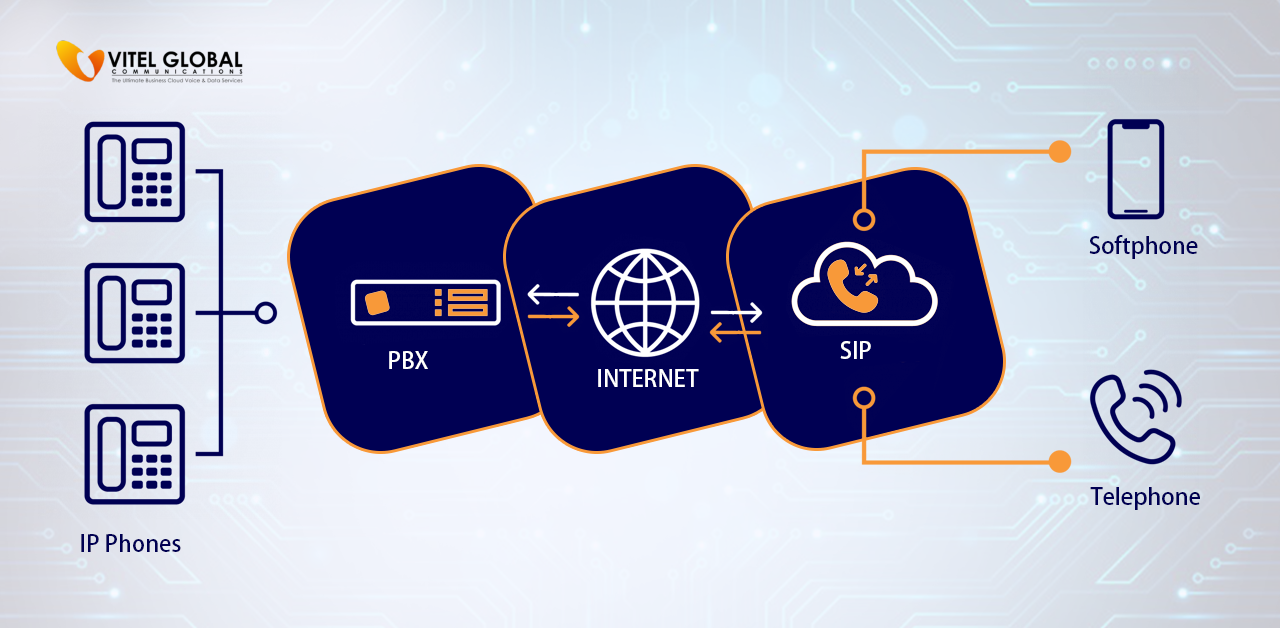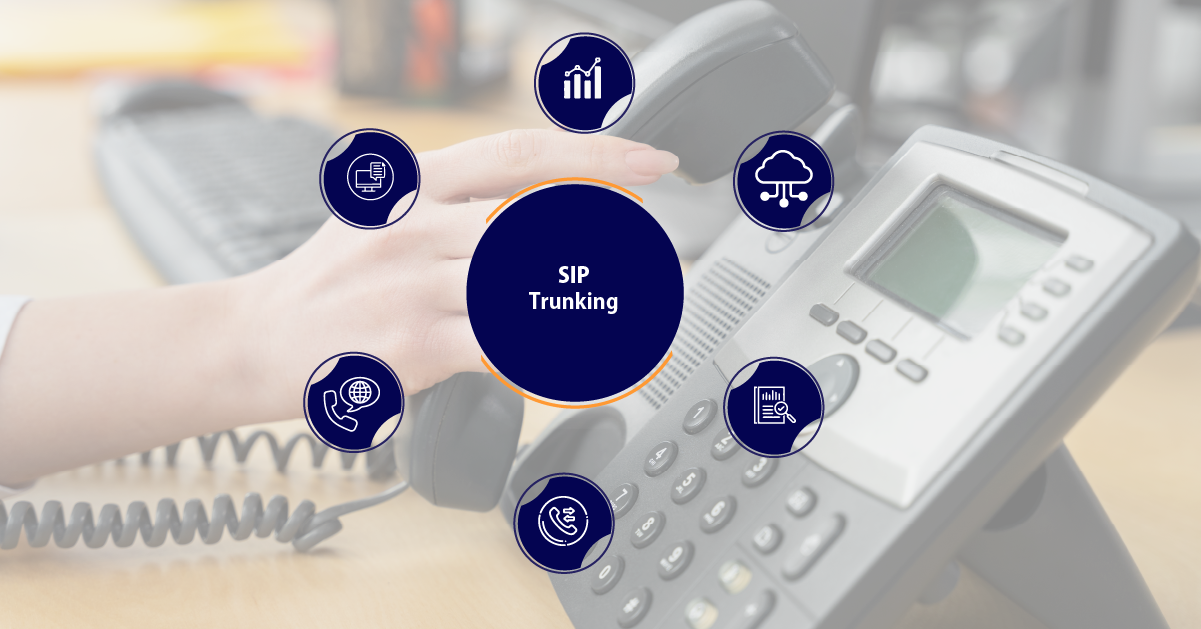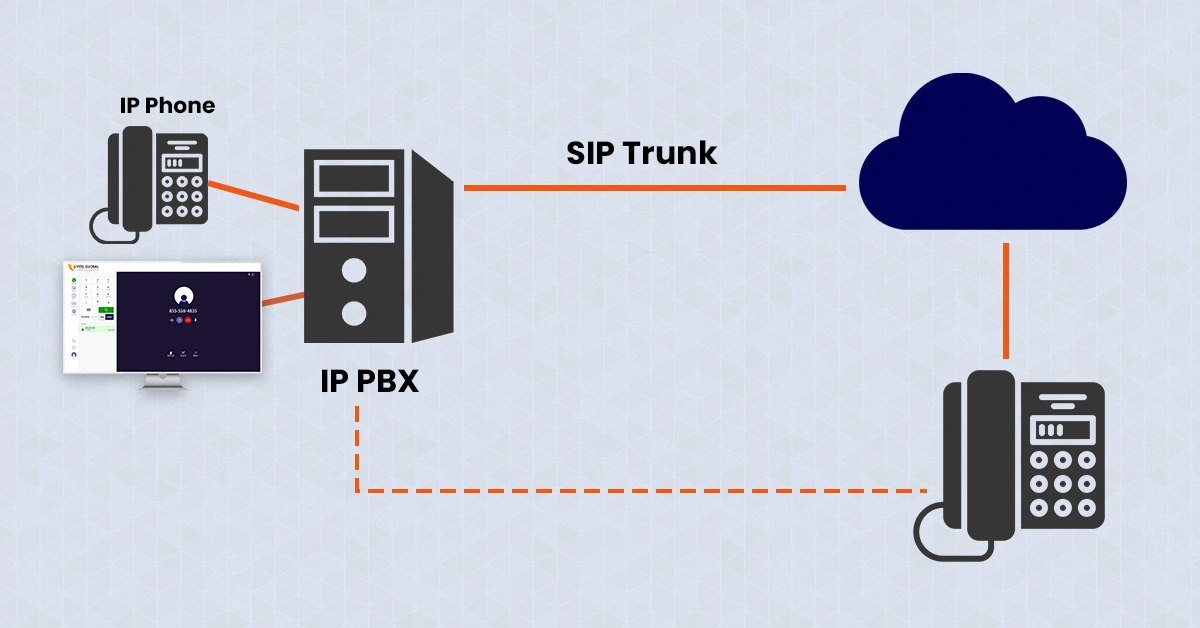Transitioning from PSTN to SIP Trunking: Understanding How They Work

5 min read
With the proliferation of VoIP, there has been a gradual decrease in the use of PSTN. However, there is still demand for adding Hosted PBXs to organizations looking at ways to modernize their technology systems. One popular method is to switch from Public Switched Telephone Networks to SIP Trunking.
This article will help IT professionals and telecom engineers understand how these two work and which might be more appropriate for their organization.
It’s not difficult to change from one system to another, but it requires planning on the organization’s behalf and understanding how each system works under different circumstances.
What Is SIP Trunking?
In other words, The Trunking uses SIP to support VoIP phone systems. It’s the standard way of connecting VoIP phones to providers and other cloud PBX or telephony systems. It is because there are only two points in the call – one caller connected directly to one called party.
With it, you place your voice calls through a VoIP carrier’s high-speed internet connection rather than the traditional copper wire-based network. There’s no need to use PSTN service to make these calls which means you can carry on your business with less expense.
In other words, the whiteboard example above is a point-to-point connection.
VoIP users must connect them through their existing phone systems within the organization. Users can access the company’s voice services with VoIP phones. It typically uses a T1 or E1 line to transmit voice data.
Using broadband and public switched telephone network connections makes it easier for organizations to add VoIP to their communications systems and offer remote user support capabilities.
It’s been a long-time coming, but the switched telephone network world is finally meeting its match. This switch might initially seem confusing, even for seasoned professionals who know all about VoIP calls.
Before moving, you need to know everything about transitioning:
It’s not a VoIP Call: As many have assumed, it’s not just a VoIP call. The transition requires a significant shift in infrastructure as compared to traditional telephony services. Your old phone lines and PBX systems can switch to a new VoIP service. It’s important to change the configuration of your office phone system to support recording and other features on par with your traditional switched telephone network-based business phone system.
Before we talk about the reasons behind changing from PSTN to SIP trunking, let us first understand why this is such a good idea in the first place. Here’s a quick list of benefits you should look forward to once you make the change.
- No more local area code: It probably is appealing. The local area code will disappear, and all your calls will move over to VoIP. Local calling zones or dialing patterns will not track when calling other areas.
- Faster call ping: You no longer need an intermediary trunk call when connecting to an offsite contact. VoIP calls are digitally encrypted and will be faster than any traditional call. It significantly reduces the burden on your network and eases the load on your PBX/voicemail system.
- No more disconnections: This is more than just a plus for you and your customers. Traditional phone lines have a higher likelihood of disconnections and delays when compared to VoIP calls. The VoIP infrastructure is built so that all the problems of network systems are circumvented, thus ensuring a much more reliable customer experience.
- Quality Assurance: Business communications have shown that voice quality for VoIP calls is consistently better than PSTN calls of similar duration.
Here’s How Trunking Work:
PSTN:
In a public switched telephone network setup, when you make a phone call, your voice is converted into analog signals and transmitted over copper wires. The signals travel through a series of switches and exchanges in the telephone network until they reach the recipient. The recipient’s telephone then converts the analog signals back into audible sounds.
When you make a phone call, your voice is converted into analog signals and transmitted over copper wires. It is a heavily regulated process, with the contact shared among each carrier that transmits it. This outdated and inflexible system is also vulnerable to outages, quality and service issues, and expensive fees.
SIP Trunking:
It uses Voice over Internet Protocol to transmit voice calls. Without the use of physical wires, voice signals convert digital packets and are sent over an IP network. The protocol will establish and manage these voice sessions. The packets route through IP networks to reach the recipient, where they convert back into audio.
It uses internet-based phone lines for voice calls rather than traditional copper wires. It means that your voice signal remains digital throughout the call. The result? Higher call quality with fewer dropped calls, better protection against power outages, and easier installation — all of which add up to a more cost-effective telephony setup.
PSTN vs. SIP:
You might wonder which of these two technologies is right for you or your business. This article will explain how Trunking is alike and how they’re different.
A public switched telephone network is a traditional telephone network that has been in use for many years. It relies on physical copper wires and circuit-switching technology to establish connections between callers. In contrast, using the Session Initiation Protocol, Trunking is a modern method of transmitting voice calls over the Internet.
Transition Trunking Offers Several Advantages:
- Cost Savings: Your switched network provider will continue to provide traditional telephone service, taking care of your current connections and numbers. It can be more cost-effective than traditional network services. It eliminates the need for separate voice and data networks, reduces long-distance call charges, and offers flexibility in scaling the required channels.
- No Long-Term Contract: One-time setup costs of SIP trunking can be covered by a one-time equipment purchase from your carrier.
- Voice Quality: Good voice is always maintained on the network, with no compression.
- Caller ID: You’ll have a different number for each call made through the service, so people won’t recognize you when you call them back. It ensures safety when conducting business.
- SIP Trunk Service Provider technology allows for “packet switching” (delivering your calls in batches). It can get you much better rates on long-distance and international calls. Enhanced call quality. Because Internet bandwidth is much greater than the PSTN’s, VoIP technology gives you clearer, more consistent connections without lag time or delays common in regular dial-up internet connections.
- Scalability: It allows for easy scalability, as physical infrastructure does not limit it. You can remove or add channels virtually without additional hardware.
- Flexibility: It enables the integration of various communication services, such as voice, video, and instant messaging, over a single IP network. It also supports advanced features like call forwarding, recording, and interactive voice response (IVR) systems.
It makes obtaining local phone numbers from different geographic regions possible, even if the business is physically located elsewhere. This feature is useful for companies with a global presence or those looking to establish a virtual presence in specific locations.
To transition Trunking, you would typically need an IP-enabled phone system or a session border controller (SBC) to connect your existing telephony infrastructure to a Session Initiation Protocol trunk provided by an Internet Telephony Service Provider. It will handle the conversion of calls between the IP network and the PSTN.
Conclusion:
Hope this explanation clarifies the transition trunking. It’s worth noting that during the transition, it’s common for businesses to maintain both PSTN and SIP Trunk Service simultaneously to ensure a smooth migration and provide fallback options if necessary.
Published: May 9th, 2023
Subscribe to Our Latest Updates
Get monthly product and feature updates, the latest industry news, and more!





